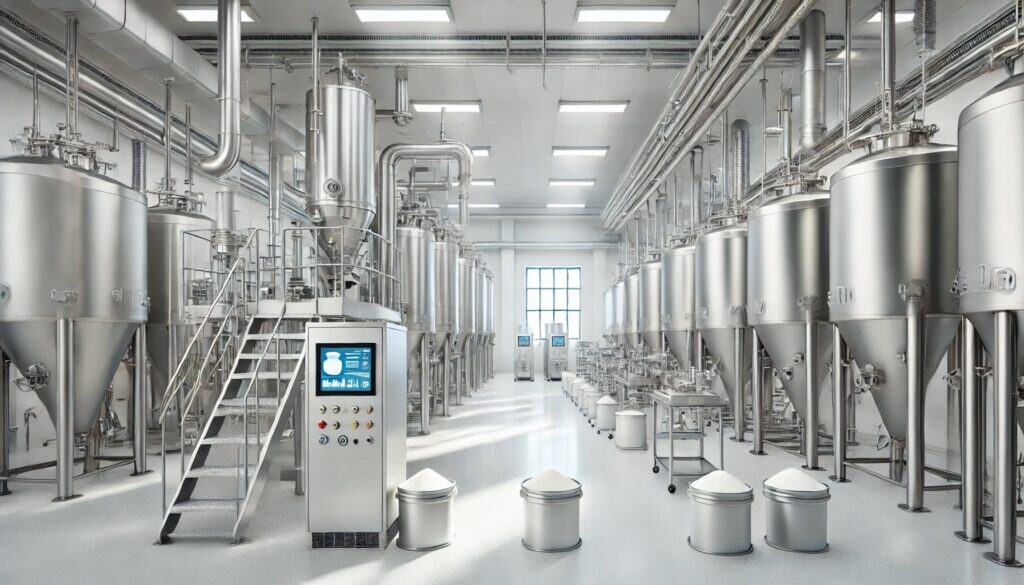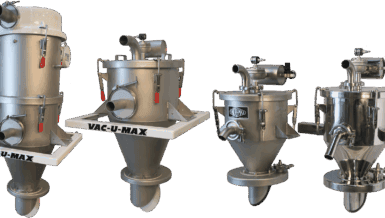Driven by labor shortages, increased demand for productivity, rising safety standards, and a push toward sustainability, companies across sectors such as food and beverage, pharmaceuticals, chemicals, plastics, and minerals are turning to automated systems to remain competitive.
While automation has long been a part of high-speed packaging lines and assembly systems, its integration into the less predictable world of powder and bulk solids processing marks a new era of industrial transformation.
Historically, powder handling was seen as too complex or too inconsistent for automation to be truly effective. Variables such as inconsistent material flow, dust generation, segregation of blends, and unpredictable flowability made manual handling not only common but often necessary. However, advances in technology—particularly in robotics, sensor systems, data analytics, and control software—have made it possible to automate even the most challenging parts of the process.
What was once reliant on skilled operators is now increasingly managed by PLCs, SCADA systems, and smart actuators that adjust to fluctuations in flow, temperature, humidity, and other variables in real-time.
The global pandemic has accelerated this trend, which exposed vulnerabilities in labor-dependent systems. Plant managers who once relied on teams of operators to run and troubleshoot production lines suddenly found themselves in need of remote access, predictive maintenance tools, and digital diagnostics. As a result, automation shifted from being a “nice to have” to an operational necessity.
Furthermore, younger generations entering the workforce are more tech-savvy but less interested in the repetitive manual labor often required in bulk materials processing. This demographic shift is pushing companies to invest in modern systems that can be operated through intuitive touchscreens and integrated with mobile devices and cloud-based platforms.
Another key factor in the adoption of automation is the demand for higher product quality and consistency. In industries such as pharmaceuticals and food processing, maintaining tight tolerances is critical for performance and regulatory compliance.
Automation enables tighter process control, more accurate batching, reduced cross-contamination risk, and better traceability. For example, in dairy powder production or infant formula blending, automated systems can precisely measure ingredients, maintain hygienic conditions, and log every step of the process—something that is nearly impossible to achieve with manual labor alone.
Energy efficiency and sustainability are also playing a growing role in automation adoption. Automated systems can reduce waste by ensuring optimal material usage and reducing product loss during transfer or storage. Moreover, smart sensors can detect when equipment is idling and automatically power down components, thereby lowering energy consumption. In large facilities, these incremental gains add up quickly and contribute to both cost savings and corporate ESG goals.
The evolution of digital twin technology is another development propelling automation forward. A digital twin is a virtual model of a physical process or system that allows engineers to simulate, monitor, and optimize operations in real-time. In the context of powder and bulk solids, digital twins can be used to visualize flow patterns in hoppers, simulate blending dynamics, or predict maintenance needs for valves and conveyors. By identifying potential issues before they occur, digital twins reduce downtime and improve overall equipment effectiveness (OEE).
Of course, automation in powder processing does not come without challenges. One of the biggest hurdles is integration. Many plants operate legacy equipment that was never designed with automation in mind. Retrofitting such systems requires careful planning, custom engineering, and, sometimes, complete reconfiguration of material flow paths. This is especially true for facilities handling abrasive or cohesive powders, which can wear out sensors or cause blockages in automated systems. However, modular automation solutions are making it easier to scale gradually, allowing manufacturers to upgrade specific sections of their process without a full overhaul.
Another challenge is ensuring that automated systems are robust enough to handle variations in material properties. Unlike liquids, powders, and granules can behave unpredictably depending on their moisture content, particle size distribution, and surface characteristics. As a result, automation solutions must be designed with adaptability in mind. This might involve using machine learning algorithms that learn from historical data to adjust system parameters or implementing feedback loops that allow for real-time corrections.
Training and change management also play a vital role in the success of automation projects. Even the most advanced system will fail if the operators and technicians who run it are not properly trained. This requires a cultural shift in many organizations from a reliance on “tribal knowledge” and manual adjustments to a more data-driven and standardized approach. Vendors and system integrators are increasingly offering comprehensive training programs, digital manuals, and remote support services to help bridge this gap.
Looking at the global picture, North America and Western Europe are leading the charge in automation investment, but other regions are quickly catching up. In Asia-Pacific, for instance, rapid industrialization and government incentives are fueling automation in everything from cement and mining to food production. The Middle East and South America are also emerging as growth regions, particularly in sectors like fertilizer, petrochemicals, and bulk agriculture. This globalization is leading to a more connected ecosystem of suppliers, integrators, and technology providers, making it easier for even mid-sized companies to access world-class automation solutions.
The role of data cannot be overstated in this context. Modern powder and bulk processing systems generate enormous amounts of data, from load cell readings and motor currents to environmental conditions and material properties. When captured and analyzed properly, this data becomes a strategic asset. It can reveal bottlenecks, predict failures, optimize maintenance schedules, and even inform product development. The rise of Industry 4.0 and the Industrial Internet of Things (IIoT) is turning factories into smart ecosystems where every sensor, motor, and actuator plays a part in a larger digital narrative.
In conclusion, the market for industrial automation in powder and bulk solids processing is not just growing—it is maturing. As technologies become more reliable, affordable, and scalable, manufacturers across all sectors recognize automation’s long-term value. Whether the goal is to improve consistency, reduce labor dependency, enhance safety, or meet sustainability targets, automation offers a clear path forward. While challenges remain, the overall trajectory is unmistakable: the future of powder handling is smart, connected, and increasingly autonomous.
Manufacturers who embrace this trend early will gain a competitive edge and build more resilient, agile, and efficient operations. And in a world where supply chain disruptions, labor shortages, and environmental pressures are becoming the norm rather than the exception, such resilience is no longer optional—it is essential.












